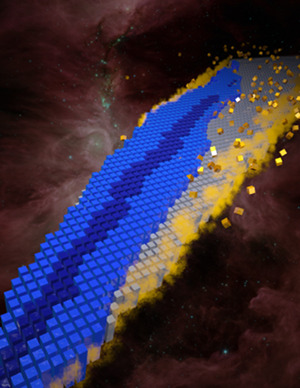
This image represents the nuclear landscape, with different isotopes, including dark blue stable isotopes, lighter blue unstable isotopes, and gray bound isotopes. (Image by Andy Sproles at Oak Ridge National Laboratory)
A supercomputer at Oak Ridge National Laboratory has been used to calculate the number of isotopes allowed by the laws of physics.
A team of Oak Ridge National Laboratory and University of Tennessee researchers used the Jaguar supercomputer to determine that there are about 7,000 possible combinations of protons and neutrons allowed in bound nuclei with up to 120 protons.
The team’s results are presented in the June 28 issue of the journal Nature.
Most of these nuclei have not been observed experimentally, an ORNL press release said.
“They are bound, meaning they do not spit out protons or neutrons,” team leader Witek Nazarewicz explained in the release. “But they are radioactive—they are short-lived—because there are other processes, such as beta decay, that can give rise to transmutations.”